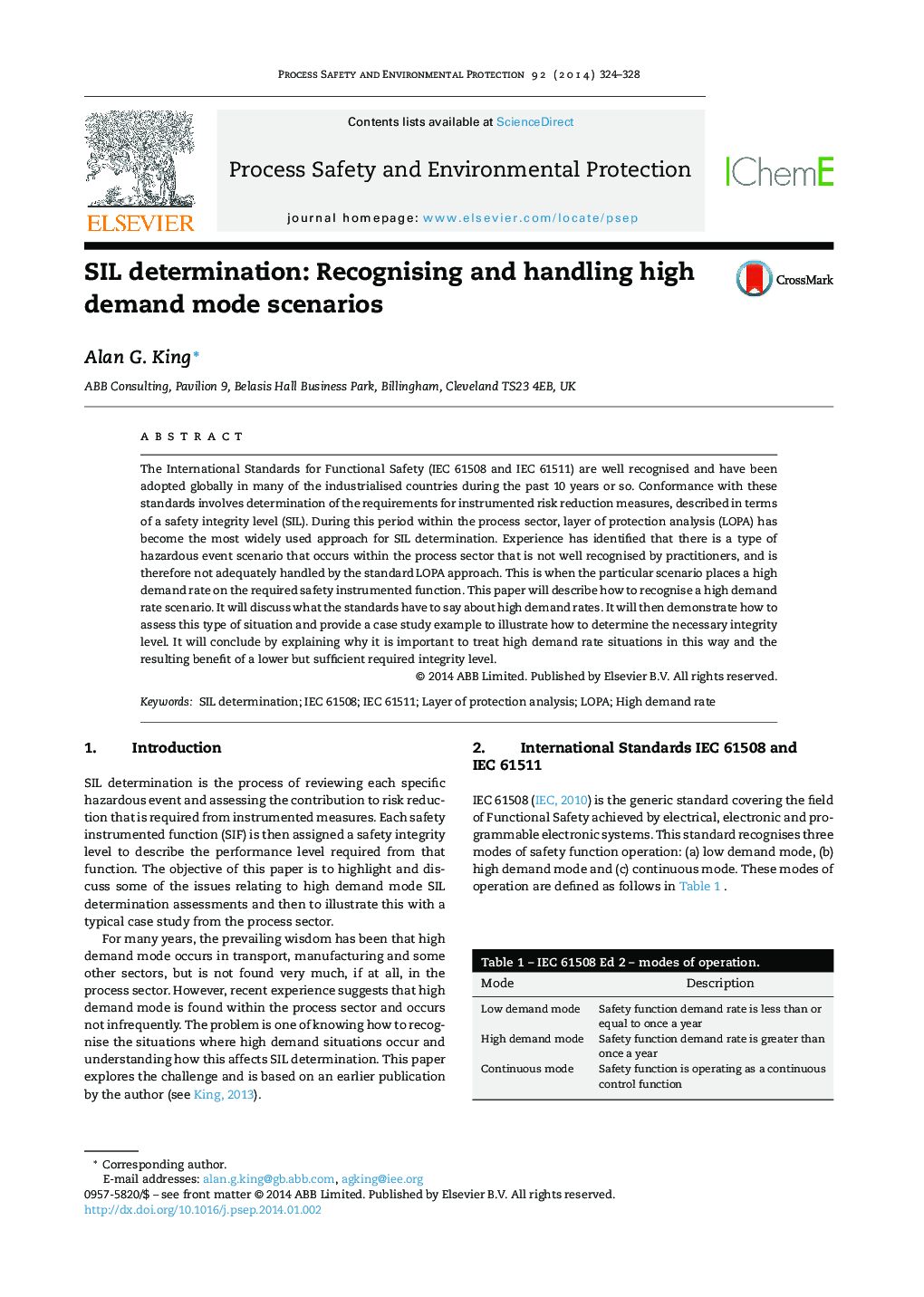| Article ID | Journal | Published Year | Pages | File Type |
|---|---|---|---|---|
| 588284 | Process Safety and Environmental Protection | 2014 | 5 Pages |
The International Standards for Functional Safety (IEC 61508 and IEC 61511) are well recognised and have been adopted globally in many of the industrialised countries during the past 10 years or so. Conformance with these standards involves determination of the requirements for instrumented risk reduction measures, described in terms of a safety integrity level (SIL). During this period within the process sector, layer of protection analysis (LOPA) has become the most widely used approach for SIL determination. Experience has identified that there is a type of hazardous event scenario that occurs within the process sector that is not well recognised by practitioners, and is therefore not adequately handled by the standard LOPA approach. This is when the particular scenario places a high demand rate on the required safety instrumented function. This paper will describe how to recognise a high demand rate scenario. It will discuss what the standards have to say about high demand rates. It will then demonstrate how to assess this type of situation and provide a case study example to illustrate how to determine the necessary integrity level. It will conclude by explaining why it is important to treat high demand rate situations in this way and the resulting benefit of a lower but sufficient required integrity level.
